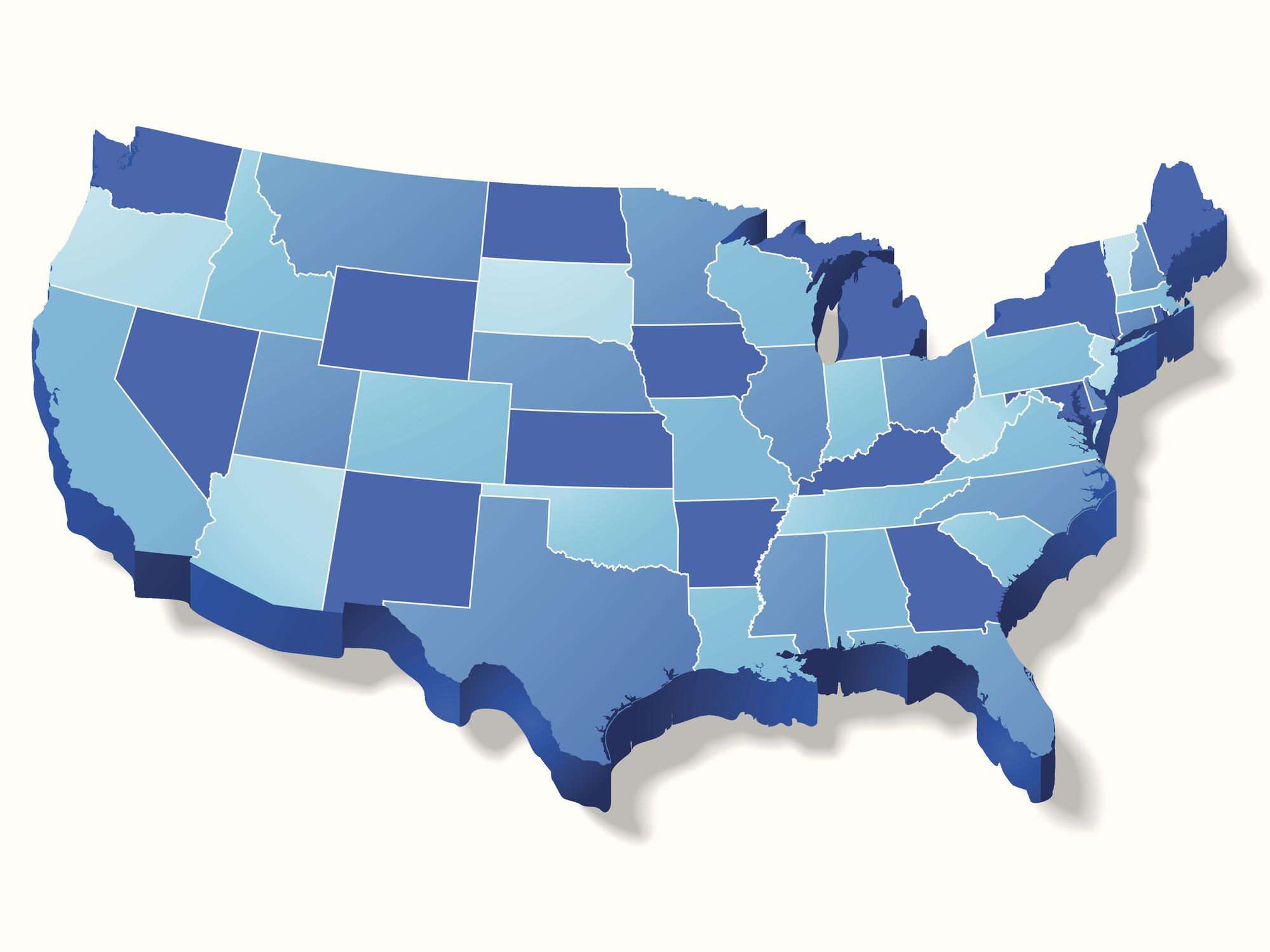
Naloxone in High Schools
states encourage naloxone access by having statewide laws requiring all public high schools to keep naloxone on site for responding to overdoses at school or at school-sponsored events, as of September 2023.
Keeping naloxone in schools; why is it important?
Guidance from national professional organizations and a growing body of research supports schools keeping naloxone on hand as part of their comprehensive school emergency and response plans. [1]Rebecca King, Science over Stigma: Saving Lives–Implementation of Naloxone Use in the School Setting, 31 NASN School Nurse 96–101 (Feb. 29, 2016), https://doi.org/10.1177/1942602X16628890. School systems making on-site naloxone available should include guidelines regarding when and how naloxone will be administered and provide staff training before implementation.
Youth drug overdose rates are increasing, but youth access to naloxone remains low
Overdose mortality rates among adolescents (ages 14-18) increased by 94% between 2019 and 2020 and 20% between 2020 to 2021. [2]Joseph Friedman, et al., Trends in Drug Overdose Deaths Among U.S. Adolescents, January 2010 to June 2021, 327 JAMA 1398–1400 (Apr. 12, 2022), https://doi.org/10.1001/jama.2022.2847. Moreover, in 2021, 77% percent of adolescent overdose deaths involved fentanyl. [3]Id. Not only does this segment of youth using opioids face possible fentanyl exposure, but research shows there is a rise in fentanyl contamination in stimulants, benzodiazepines, and other substances. [4],Megan K. Reed, et al., “You can’t go wrong being safe”: Motivations, patterns, and context surrounding use of fentanyl test strips for heroin and other drugs, 103 The International Journal on Drug Policy (May 2022), https://doi.org/10.1016/j.drugpo.2022.103643.[5]Friedman, supra note 2. According to the 2022 National Survey on Drug Use and Health, 14.3% percent of youth aged 12-17 report using any illicit drug in the past year, while 20.9% percent report any lifetime use. [6]2022 National Survey on Drug Use and Health (NSDUH) Releases – Table 1.2B, Substance Abuse and Mental Health Services Administration, https://www.samhsa.gov/data/sites/default/files/reports/rpt42728/NSDUHDetailedTabs2022/NSDUHDetailedTabs2022/NSDUHDetTabsSect1pe2022.htm (last accessed Nov. 21, 2023).
Given the overdose risk to youth, experts highlight a need for increased youth access to naloxone. [7]Nicholas Chadi & Scott E. Hadland, Youth Access to Naloxone: The Next Frontier?, 65 The Journal of Adolescent Health 571–572 (Nov. 2019), https://doi.org/10.1016/j.jadohealth.2019.08.005. Although most types of health insurance do not include age restrictions for naloxone coverage, youth access remains low. [8]Id. This may be attributed to several factors, including stigma regarding providing it to youth or incorrect assumptions by pharmacists regarding minimum age requirements for naloxone purchase. [9], Sarah M. Bagley, et al., Addressing Stigma in Medication Treatment of Adolescents with Opioid Use Disorder, 11 Journal of Addiction Medicine 415-416 (Nov./Dec. 2017), https://doi.org/10.1097/ADM.0000000000000348.[10]David E. Jimenez, Availability of Naloxone in Pharmacies and Knowledge of Pharmacy Staff Regarding Dispensing Naloxone to Younger Adolescents, 65 Journal of Adolescent Health 698–701 (Nov. 2019), https://doi.org/10.1016/j.jadohealth.2019.07.009. Health providers, often pediatricians, may also be less likely to educate youth on overdose prevention or prescribe naloxone. [11]J. Deanna Wilson, et al., Identifying Missed Clinical Opportunities in Delivery of Overdose Prevention and Naloxone Prescription to Adolescents Using Opioids, 63 The Journal of Adolescent Health 245–248 (Aug. 2018), https://doi.org/10.1016/j.jadohealth.2018.05.011. With these barriers to young people obtaining naloxone, making the medication available inside schools is important.
Placing naloxone in schools increases marginalized populations’ access to it and is an inexpensive way to save lives
Racial inequities result in reduced access to substance use disorder (SUD) care, generally. Accordingly, providing access to naloxone in most or all schools is crucial. The differences in naloxone access between rural and urban locations are also a concern, as studies indicate that prescriptions for the medication differ 25-fold between some rural and urban regions. [12]Chadi & Hadland, supra note 7. Schools can be a valuable site at which to provide a method of harm reduction to students with less access to SUD care outside of school.
The cost to outfit each school with an adequate amount of naloxone, even at the over-the-counter cost of about $45, is quite modest. Accordingly, placing naloxone in K-12 or 6-12 schools can be a relatively low-cost way to save lives.


